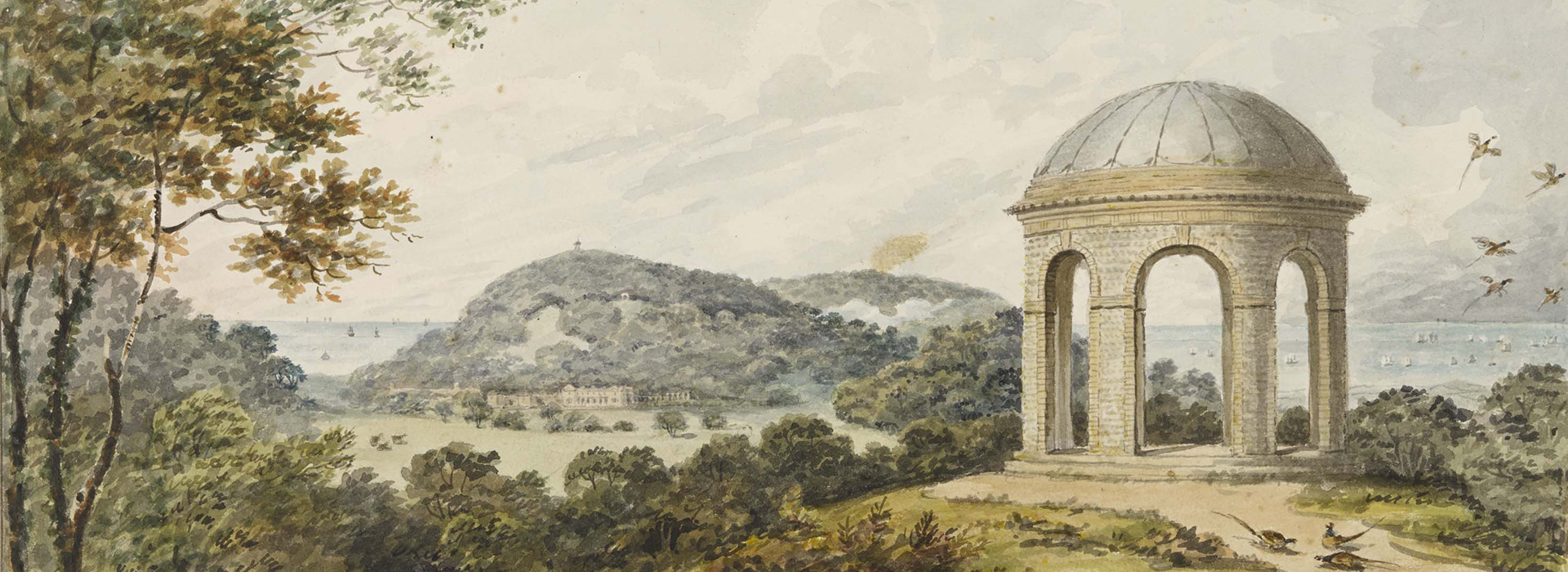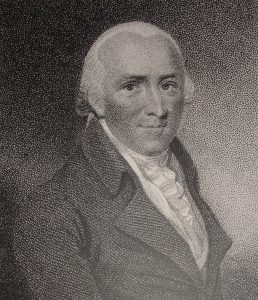 Humphry Repton was interred in a grave close by the south wall of Aylsham parish church following his death on the 24th March 1818. Next year will mark the two-hundredth anniversary of his death. This anniversary of the last great English landscape designer will be celebrated by a series of commemorative events through the spring and summer.
Humphry Repton was interred in a grave close by the south wall of Aylsham parish church following his death on the 24th March 1818. Next year will mark the two-hundredth anniversary of his death. This anniversary of the last great English landscape designer will be celebrated by a series of commemorative events through the spring and summer.
Repton produced designs for the grounds of many of England’s foremost country houses: in all improvement schemes for over four hundred estates, not only in Norfolk but further afield too. Many of these landscapes have come down to us and are available for all to enjoy. Some will be available for the public to visit in 2018, and we hope to provide details of those at a later date on this website.
Early Life
Repton was born in Bury St Edmunds, the son of John Repton, a successful collector of excise, and Martha (nee Fitch). He was educated at Norwich Grammar School, where his father ran a transport business. In 1764 he was sent to the Netherlands to train as a merchant. Here he cultivated his skills as a sketcher and private gardener. A period of apprenticeship to a Norwich textile merchant followed and on his marriage to Mary Clarke in 1773 he went into business on his own account. This venture was not successful and his parents’ death in 1778 provided a small legacy to settle on a small country estate, as a minor squire farming his land, at Sustead near Aylsham in Norfolk. Here Repton continued to cast around for suitable business opportunities. Periods as a journalist, dramatist, artist, political agent, and as confidential secretary to William Windham of Felbrigg, when he was Lord Lieutenant of Ireland, followed one after the other with little success. Has was also involved in a joint venture to reform the mail-coach system, but this similarly lost him money.[1]
The successor to Capability Brown
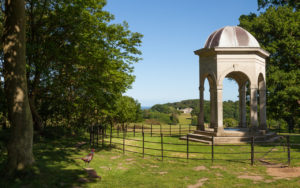
Following these early business setbacks, Repton was encouraged by a childhood friend, James Smith,[2] to develop further his interests in gardening and sketching. It was at this point that his professional interest in landscape gardening blossomed: William Windham gave access to botany books from his library. His capital dwindling, he moved his young family in 1788 to Hare Street near Romford, Essex. Capability Brown’s death five years earlier had left a gap in the landscape gardening world that Repton was keen to fill. He sent circulars to land owners he had cultivated whilst in Norfolk and Ireland; thus he tentatively commenced his career as a landscape gardener, a phrase he coined. His first landscape commissions relied on his Norfolk connections: Catton Park, Norfolk, England for the mayor and textile merchant, Jeremiah Ives, and at Holkham, also in Norfolk, for Thomas Coke, a notable farming improver. Arguably, the most successful of his projects in Norfolk was Sheringham Hall some years later.[3]
Repton the Landscape Gardener
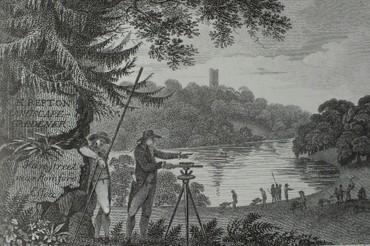
Many of his commissions involved the preparation of a folio of plans, drawings and accompanying explanatory text for individual clients: his famous ‘Red Books’. Repton’s approach to landscape gardening contrasted sharply with that of Capability Brown, who invariably worked on a wide canvas that fashioned huge new landscaped parks. Repton, by contrast, more often than not embellished and modified the existing landscape in harmony with nature. And whereas Brown used large perimeter belts of trees to enclose, Repton cut vistas through to ‘borrowed’ features beyond, such as church towers, making them seem part of the designed landscape. He contrived approach drives and lodges in the cottage orné style to enhance impressions of size and importance. Capability Brown acted as both designer and contractor; providing a concept to completion service. By contrast, Repton acted as a consultant, charging for his Red Books and sometimes staking out the ground, but leaving his client to arrange the actual execution. Consequently, many of Repton’s four hundred or so designs remained wholly or partially unexecuted. Also, whereas Brown became wealthy, Repton’s income was never more than comfortable.
The Picturesque Controversy
Repton’s essentially practical, restrained style led him into to the very public ‘picturesque controversy’ with leading art critics, Richard Payne Knight and Uvedale Price. They regarded that landscape re-modelling should imitate contemporary approaches to landscape painting that showed more rugged and intricate landscapes, accompanied by classical motifs and references. Repton’s design solutions produced practical and often restrained designs for his clients. He particularly disliked attempts to impose the classical Italian style on the English climate and landscape. He followed and set out to enhance nature. He describes landscape gardening in the following way:
“The perfection of landscape gardening consists in the four following requisites. First, it must display the natural beauties and hide the defects of every situation. Secondly, it should give the appearance of extent and freedom by carefully disguising or hiding the boundary. Thirdly it must studiously conceal every interference of art. However expensive by which the natural scenery is improved; making the whole appear the production of nature only; and fourthly, all objects of mere convenience or comfort, if incapable of being made ornamental, or of becoming proper parts of the general scenery, must be removed or concealed.”[4]
The ‘Gardenesque’
Some of his designs foreshadowed later popular themed gardens, the laying out of gravel walks and of lawns for use as cricket, bowls and croquet pitches. He also helped popularise the use of terraces and re-introduced separate flower gardens and flower beds. He also replaced earlier classical ornamentation with romantic structures like grottoes and fake ruins. Existing buildings played an integral part in many of his schemes. They both provided reference points and informed his final design for a landscape. At one point in his career he worked, with the architect John Nash, whose early building design suited Repton’s garden style. His son, John Adey Repton, an architect, worked with him and in Nash’s office; continuing to do so after his father’s collaboration with Nash ended acrimoniously around 1800. A younger son, George Stanley Repton, also worked with him.
Retirement and later life
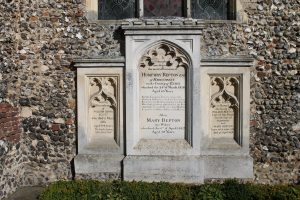
He retired in 1814, three years after a carriage accident that forced him to use a wheelchair thereafter. In retirement he produced a book, with his son J. Adey Repton, detailing his approach to landscape gardening; Fragments on the Theory and Practice of Landscape Gardening (1816). The book adopts the phrase “landscape gardening” to express his theory that the art requires “…the united powers of the landscape painter and the practical gardener…” He also discussed in detail the relationship between the landscape and the main estate house. To be able to provide visual representations of proposed improvements, he used a system of sliding panels depicting before and after views. He published two other major works on garden design: Sketches and Hints on Landscape Gardening (1795), Observations on the Theory and Practice of Landscape Gardening (1803). He authored a number of other minor works. Taken together with his Red Books, these books are an important part of his legacy to landscape design today.
[1] John Palmer (1742-1818), prominent Bath theatre owner and MP, revised the country’s system of mail coaches that led to the post office reforms responsible for the foundation of an efficient mail delivery service. Mayor of Bath and Comptroller General of the Post Office
[2] He collaborated with Sir James Edward Smith MD (1759-1828). Smith, a botanist, was the son of a wealthy Norwich wool merchant. He founded and was responsible for the early development of the Linnean Society of London. He was the author of a number of prominent works on botany.
[3] There is a permanent Repton exhibition at Sheringham Park, Norfolk, including a facsimile of his Red Book for this place
[4] H Repton An Inquiry into the Changes of Taste in Landscape Gardening, with some Observations on its Theory and Practice (1806) and quoted in Jason Perry Humphry Repton

